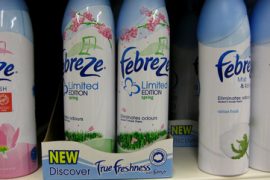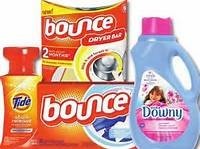I had a friend over for lunch and after washing her hands in the kitchen she asked where the paper towels were. I told her I didn’t use paper towels and handed her a cloth towel. In that split second I saw a look of surprise on her face, and I wondered why it was so shocking that I didn’t use paper towels. The truth was I couldn’t remember the last time I used them. Somewhere along the line it just seemed like a waste of money to use something once and toss it.
After lunch, as we were cleaning up, “Where are the sponges?” was the next question. When I said I didn’t have any sponges, I got the look again and handed her a small dishcloth. I began to feel a little like I was from another planet. I had been doing the paperless kitchen for so long it just seemed normal to me, but apparently it isn’t the “norm” for a lot of people.
Why I Don’t Use Paper Towels
It just seems wasteful to me to use something once and toss it. No doubt there are arguments on both sides about paper versus cloth. Personally I am on my second set of dishcloths, the newer set is 5 years old. So for me the choice is clear, using dishcloths is a better option.
I began to ponder how much waste there is in tossing out paper towels daily, not to mention the deforestation, the factory pollution of creating them, the plastic wrap, cardboard tubes, etc versus tossing a very worn organic cotton dishtowel every 5+ years?
I’m sure costs vary based on the size of your household, and how frequently you use them. But at well over a dollar per roll, the cost can add up quickly. How many paper towels people use varies widely amongst families. After asking a few people I know, the answers came back with a wide range of one roll a month to 8-10 rolls a month.
You can make your own dishtowels by cutting up and hemming old sheets, towels and even old clothing. You can also buy cloth napkins and dishtowels at second hand stores or thrift shops.
Why I Don’t Use Sponges
Not all sponges are created equal. Unless you are buying pure cellulose sponges or organic based sponges such as loofahs, you’re likely using one of Mother Nature’s least favorite substances: oil-based, landfill-clogging plastic. I admit I’m not a fan of sponges either, they harbor germs, they are slow to decompose if they are made of synthetic fibers and vibrant colored sponges are dyed with chemicals. There’s also the added environmental danger with many synthetic sponges that are impregnated with chemicals such as Triclosan. Triclosan is an antibacterial and antifungal agent and is registered with the Environmental Protection Agency as a pesticide. You can learn more about triclosan by clicking here or here. While organic sponges may decompose more quickly, they are pricey. Any sponge pack that states it is anti-bacterial or destroys odors is probably best left on the supermarket shelf as it’s likely to contain triclosan or something equally damaging to you and the environment.
Buy reusable napkins and cleaning cloths to reduce your usage of rolls (and rolls) of paper towels. You can save up to $150 per year for a household that uses two rolls per week, conserving 30 pounds or more of tissue-grade paper. http://www.earth911.com/home-garden/oops-eco-intentions-gone-wrong/
Non Paper Options around the Home
Dishcloths/Hand towels for wiping your hands after washing
Small dishcloths for wiping counters
Small dishcloths for wiping up spills on the floor.
Handkerchiefs not tissue
Some interesting facts from NRDC (National Resources Defense Council):
http://www.nrdc.org/land/forests/gtissue.asp#towels
If every household in the United States replaced just one roll of virgin fiber paper towels (70 sheets) with 100% recycled ones, we could save 544,000 trees.
If every household in the United States replaced just one box of virgin fiber facial tissues (175 sheets) with 100% recycled ones, we could save 163,000 trees.
If every household in the United States replaced just one roll of virgin fiber toilet paper (500 sheets) with 100% recycled ones, we could save 423,900 trees.
If every household in the United States replaced just one package of virgin fiber napkins (250 count) with 100% recycled ones, we could save 1 million trees.
Three Things You Can Do To Help Save Forests from NRDC http://www.nrdc.org/land/forests/gtissue.asp#towels
- Buy paper products with recycled content — especially post-consumer fibers.
Look for products that have a high recycled content, including high post-consumer content. Post-consumer fibers are recovered from paper that was previously used by consumers and would otherwise have been dumped into a landfill or an incinerator.
- Buy paper products made with clean, safe processes.
Paper products are bleached to make them whiter and brighter, but chlorine used in many bleaching processes contributes to the formation of harmful chemicals that wind up in our air and water and are highly toxic to people and fish. Look for products labeled totally chlorine-free (TCF) or processed chlorine-free (PCF). In some cases, elemental chlorine-free (ECF) may be acceptable.
- Tell tissue manufacturers to stop using virgin wood for throwaway products.
If a brand you buy for your home doesn’t have any recycled content, contact the manufacturer. Tell the company to use more recycled fibers, to avoid sourcing from ecologically valuable forests such as those in the Cumberland Plateau and Canadian boreal, and to ensure any virgin fibers used are certified by the Forest Stewardship Council. Saving forests also helps reduce global warming pollution.
Print this wallet card from NRDC for your next shopping trip:
http://www.nrdc.org/land/forests/tissueguide/walletcard.pdf
References:
http://www.epa.gov/epawaste/nonhaz/municipal/pubs/msw2009rpt.pdf
http://www.bountytowels.com/en_US/bounty-faqs.shtml paper towels are made from virgin pulp
http://www.tappi.org/paperu/all_about_paper/products.htm
http://www.growingagreenfamily.com/ditch-paper-towels-and-save-1000-in-five-years/
http://www.growingagreenfamily.com/wait-paper-towels-really-come-from-trees/
http://www.growingagreenfamily.com/how-eco-friendly-are-biodegradable-products/
http://www.earth911.com/recycling-center-search-guides/ recycling guide
http://www.afandpa.org/our-products/paper-products-glossary
http://www.id2.ca/downloads/eco-design-paper-facts.pdf paper facts
http://www.growingagreenfamily.com/green-new-years-goal-quit-using-paper-towels-paper-napkins/
http://www.growingagreenfamily.com/50-reusable-goods-vs-disposable-goods/
http://www.growingagreenfamily.com/refillable-liquid-soap-dispensers/ local co-op fill your own bottles
http://www.growingagreenfamily.com/how-eco-friendly-are-biodegradable-products/
http://www.terracycle.com/en-US/ recycling bliss








